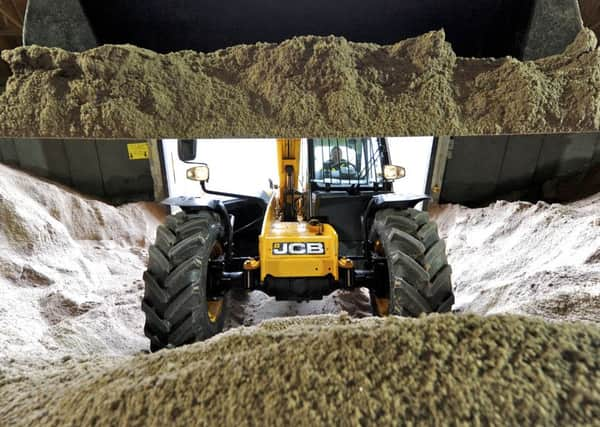Winter salting consultation


SBC’s Executive approved the network this week, which was finalised after discussions with community council representatives and ward councillors in towns and villages affected.
This consultation was part of a wider review by SBC officers, and has resulted in the creation of a defined network which will enable the best possible use of resources.
Advertisement
Hide AdAdvertisement
Hide AdA total of 3,000km of roads in the Borders are covered by the Council’s winter service. Priority routes are determined depending on various factors such as traffic volumes, bus routes and access to schools, shops and medical centres.
Councillor Gordon Edgar, SBC’s Executive Member for Roads and Infrastructure, said: “A number of our larger communities have designated primary salting routes and in determining a secondary network for these towns, and some of our village communities, we felt that local member and community input would be beneficial.
“Officers drafted a proposed secondary route for each identified town and village and met with ward members and consulted with community councils to finalise it.”
Councillor Edgar added: “The creation of a secondary salting route network for these towns and villages, and the wider Scottish Borders, ensures that we can provide detailed information to the public on the next level of treatment that is being provided after primary salting.
Advertisement
Hide AdAdvertisement
Hide Ad“The previous arrangement left the priority of secondary treatment open to interpretation and resulted in inconsistencies in service delivery. The new prioritisation of routes is not a reduction in the winter service, it simply makes our winter service more efficient and effective, ensuring that secondary routes are treated in order of priority.”
Currently 37 per cent of the Council’s road network is treated under primary salting.
In creating a specific secondary network, officers have included any ‘A’ and ‘B’ class roads not covered under primary treatment and remaining school and timber transport routes. This covers 16 per cent of the road network and these will be salted after the primary routes, if there is sufficient time and resources available, and it is believed that the freezing conditions will continue.
Remaining routes will only be treated when extended winter weather conditions persist and all primary routes have been treated, resources have been committed to treat secondary routes, and resources have become available.
Advertisement
Hide AdAdvertisement
Hide AdTo ensure the public is kept up to speed with winter weather information and advice, the Council will continue to use its new SBAlert service, Twitter and Facebook pages, and the local media to get messages out to residents.
The Council’s own website also has a winter service section – www.scotborders.gov.uk/winter - that provides a wealth of information and will also be updated during winter weather to help the public make informed decisions on travel.